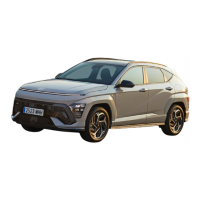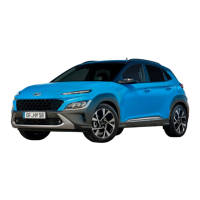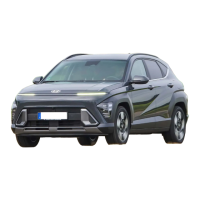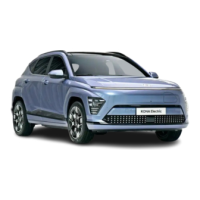Driving Your Vehicle
6-18
Good driving practices
• Never shift the gear from P (Park) or N
(Neutral) to any other position with the
accelerator pedal depressed.
• Never shift the gear into P (Park) when
the vehicle is in motion.
Be sure the vehicle is completely
stopped before you attempt to shift
into R (Reverse) or D (Drive).
• Do not shift the gear to N (Neutral)
when driving. If the gear is shifted to N
(Neutral) while driving, the vehicle
loses the ability to provide engine
braking. Doing so may increase the risk
of an accident.
Also, shifting the gear back to D (Drive)
while the vehicle is moving may
severely damage the transmission.
• When driving uphill or downhill, always
shift to D (Drive) for driving forward or
shift to R (Reverse) for driving
rearwards. After selecting D (Drive) or R
(Reverse), check the gear position
indicated on the cluster before driving.
If the vehicle moves in the opposite
direction of the selected gear, the
engine may turn off and a serious
accident might occur due to degraded
brake performance.
• Do not drive with your foot resting on
the brake pedal. Even light, but
consistent pedal pressure can result in
the brakes overheating, brake wear and
possibly even brake failure.
• When driving in sport mode, slow down
before shifting to a lower gear.
Otherwise, the lower gear may not be
engaged if the engine RPMs are outside
of the allowable range.
• Always apply the parking brake when
leaving the vehicle. Do not depend on
placing the transmission in P (Park) to
keep the vehicle from moving.
• Exercise extreme caution when driving
on a slippery surface. Be especially
careful when braking, accelerating or
shifting gears. On a slippery surface, an
abrupt change in vehicle speed can
cause the drive wheels to lose traction
and may cause loss of vehicle control
resulting in an accident.
• Optimum vehicle performance and
economy is obtained by smoothly
depressing and releasing the
accelerator.
Hyundai_SX2_en_US.book Page 18

